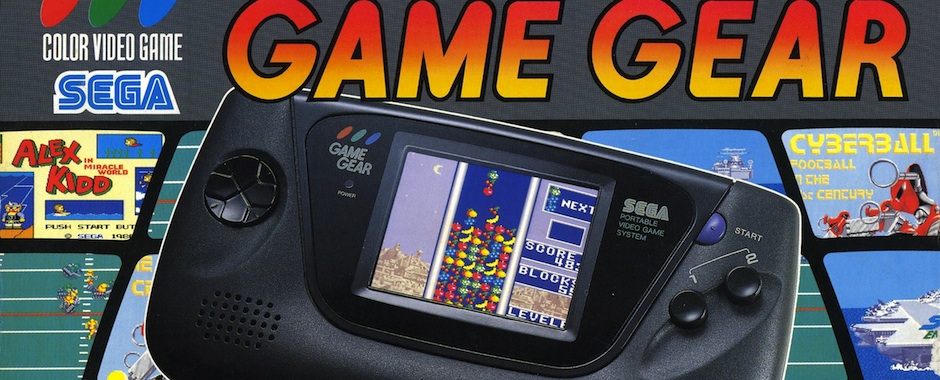In a little twist this week, we’re going to take a look at some hardware. In particular, this was my first portable game console – a surprise out of the blue after school one day, if I recall correctly – and the proof that you didn’t have to have “Game Boy” written on your handheld to be a powerhouse.
Of course, we’re talking about the Sega Game Gear, circa 1991 in North America. This was a console with a then-massive 3.2″ TFT screen, the ability to display 32 colours (with a total palette of 4096), and games that are still some of the best in history.
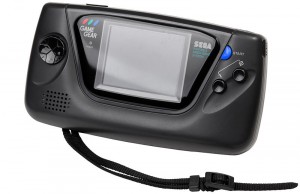 Sega’s Game Gear was also somewhat of a proof. It proved that handheld gaming could have a colour screen, incredible graphics, and a backlight. These three things were not something Nintendo managed to put into their handhelds until the early-2000s, over a decade later. But why does no one have a Game Gear DS nowadays? Why did the Game Gear fail? We have to review it to find out.
Sega’s Game Gear was also somewhat of a proof. It proved that handheld gaming could have a colour screen, incredible graphics, and a backlight. These three things were not something Nintendo managed to put into their handhelds until the early-2000s, over a decade later. But why does no one have a Game Gear DS nowadays? Why did the Game Gear fail? We have to review it to find out.
The games are likely the greatest aspect of any console, especially when we lived in a simpler time of A and B (or in the Game Gear’s case, 1 and 2) buttons. Of course, the Game Gear delivered with some of the most iconic entries in Sega’s lineup today. We’re of course referring to games like Sonic The Hedgehog and Phantasy Star Gaiden. The games were instantly playable, on cartridges just slightly large than that of a Game Boy. Of course, these cartridges held a lot more information, but they had no battery which meant save games were non-existent, much like the early Game Boy titles as well.
The screen on the Game Gear was nothing short of stunning. At that time, the screen was higher than high-definition and colours popped off of it like t-shirts from a cannon at the Superbowl. An odd analogy, sure, but the screen just looked that good.
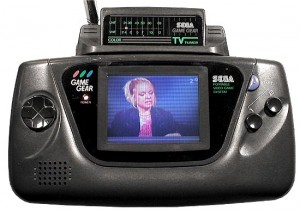 There were also some wildly innovative peripherals for the Game Gear back in the early-nineties, and we mean things that haven’t still haven’t reached mainstream until two to three years ago. Think about this back in 1991: a portable television. Sega designed one and called it the Game Gear TV Tuner. We never actually got our hands on one since they were so hard to find in North America, but its very existence meant that the future was coming. Other accessories included the Power Back, which extended the rather paltry four to six hour battery life to a more manageable 10 hours.
There were also some wildly innovative peripherals for the Game Gear back in the early-nineties, and we mean things that haven’t still haven’t reached mainstream until two to three years ago. Think about this back in 1991: a portable television. Sega designed one and called it the Game Gear TV Tuner. We never actually got our hands on one since they were so hard to find in North America, but its very existence meant that the future was coming. Other accessories included the Power Back, which extended the rather paltry four to six hour battery life to a more manageable 10 hours.
Our memories of the Game Gear are great, and we’d highly recommend anyone picking one up if they can. We’ve got a unit that travels with us every so often, and we always somehow manage to get back into the routine of playing some classic Sonic Chaos levels as if we had never stopped all those years ago.
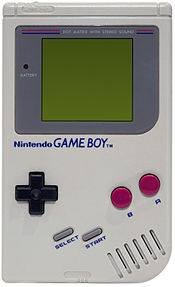
So that brings us back to our original question: just why did the Game Gear fail the way it did?
Unfortunately, while Sega had a very viable platform with Game Gear, there were two main things that never let it fully get off the ground: price, and a lack of games.
At the time of its launch, the Game Gear was priced at $150 USD, or nearly double the $90 price tag of Nintendo’s Game Boy that had released almost a full two years earlier. The Game Boy was also more pocketable, required a third fewer batteries to run, and would last for more than double the time on a single set of AAs. It had also been out for long enough before Sega’s entry in the portable gaming market that it had a head start that would prove to solidify its standing in the handheld war of the nineties.
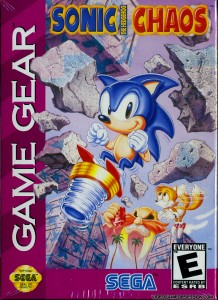 The other main issue was games. Because the Game Boy had been around, it had a larger stable of games by the time Game Gear launched. When Sega launched its handheld, there were only six titles available, while the Game Boy already had over a hundred titles on its platform. Unfortunately, games like Sonic and Phantasy Star weren’t enough to combat against Mario, Kirby, and Donkey Kong, each of which had a hit on a Nintendo platform before 1992.
The other main issue was games. Because the Game Boy had been around, it had a larger stable of games by the time Game Gear launched. When Sega launched its handheld, there were only six titles available, while the Game Boy already had over a hundred titles on its platform. Unfortunately, games like Sonic and Phantasy Star weren’t enough to combat against Mario, Kirby, and Donkey Kong, each of which had a hit on a Nintendo platform before 1992.
We’re more than happy with Sega’s position in the gaming space now. They make some incredible games, collaborate with their ex-competitors on games like Mario & Sonic at the London 2012 Olympic Games as well as publish titles for nearly every current gaming system on the planet. They even made a game that landed on our Top Ten Games of All Time list: Jet Set Radio Future!
Sega has attempted many unique and innovative things in the hardware space yet somehow never found their footing long enough to generate any lasting fan base. With that said, they’ve got a great stable of content that should keep us entertained long after their hardware ceases to function.

